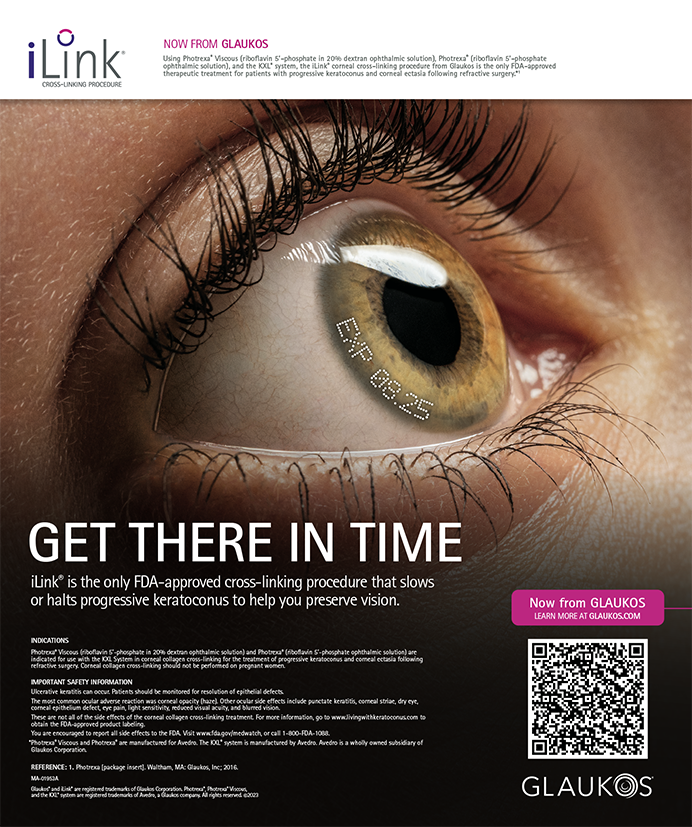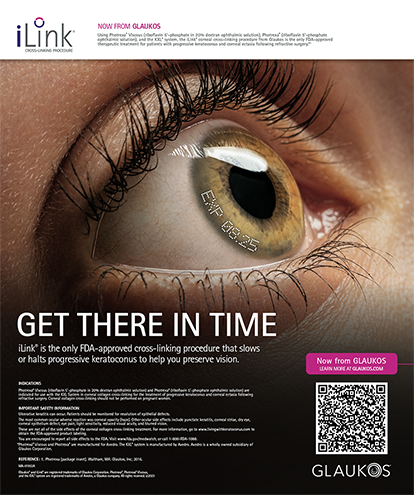
How my practice holds on to patients is summarized by the acronym RETENTION: respect, education, time, ease of use, niceness, tender loving care, inquisitiveness, outstanding customer service, and neatness.
BREAKING DOWN THE ACRONYM
Respect. In my experience, showing patients respect goes a long way. A good place to start is to ask patients their preferred name the first time you interact with them.
Education. Teach patients about their exams and procedures with print and digital content before, during, and after their visits. Sending educational videos about their eye conditions to them via email or text message can be helpful. I’ve found software from Rendia and Ocular Innovations useful for this purpose.
Time. Letting patients know what to expect during their visit, including its anticipated duration, allows them to prepare mentally and adjust their schedules accordingly. Do your best to remain on time. Know your staff and prepare for hiccups such as an emergency or a call-in by a staff member. In a situation like this, alert patients that the practice is running slightly behind schedule and convey the reason. Communicating with patients is courteous.
Ease of use. Patients want to be able to reach you easily, whether via your website, text message, email, or phone. When they call the practice, do they reach an automated message or a person who sounds happy to hear from them? Are they placed on hold for a long time?
It should also be easy for patients to make payments and check in, perhaps with their phone or tablet. The practice’s use of text reminders can make it easier for patients to keep their appointments.
Niceness. The importance of staff interaction with your patients cannot be overstated. Patients notice both what is said over the phone and how it’s said. Eye contact and a smile when greeting patients can make them feel welcome in the practice. If your staff is unhappy, it shows. It’s therefore important to cultivate a positive workplace for your employees.
Tender loving care. I recommend escorting patients to each touchpoint in their journey through your practice—from check-in to check-out—and using that time to inform them of what to expect next. Patients may appreciate help getting into and out of the exam chair. Some may welcome a hug.
Inquisitiveness. Learn about your patients’ interests and hobbies as a way to connect with them better. Document the details in the chart to help you recall them at the next visit.
Outstanding customer service. Patients should not receive the following response: “That’s not my job.” If they ask a question to which the listener doesn’t know the answer, a better response is to say, “I don’t know, but I will find out.”
Another way to deliver outstanding customer service is to demonstrate empathy. Rather than assume that patients who arrive late to an appointment or miss it altogether overlooked it on their calendar, ask them if everything is OK. They might have had an emergency. In that situation, it can mean a lot to them if you or your staff says, “I’m sorry to hear that. Let’s make your visit extra special.”
Neatness. The office and bathrooms should be clean. All trash should be in, not next to, the trash can. I recommend arranging for a cleaning person to visit the office midday to clean the bathrooms and freshen up the waiting area. Also ensure that trash doesn’t litter the pathway from the parking lot to the office.
CONCLUSION
Keeping patients happy and coming back to your practice for additional care does not require extravagance. It simply requires respect and care.




